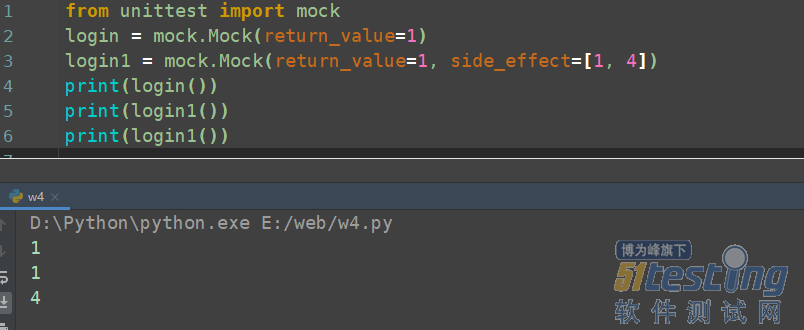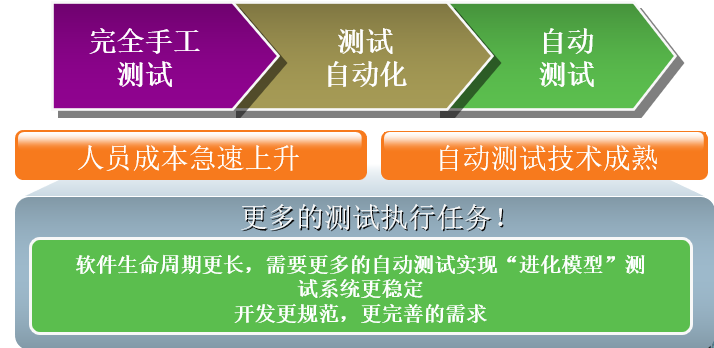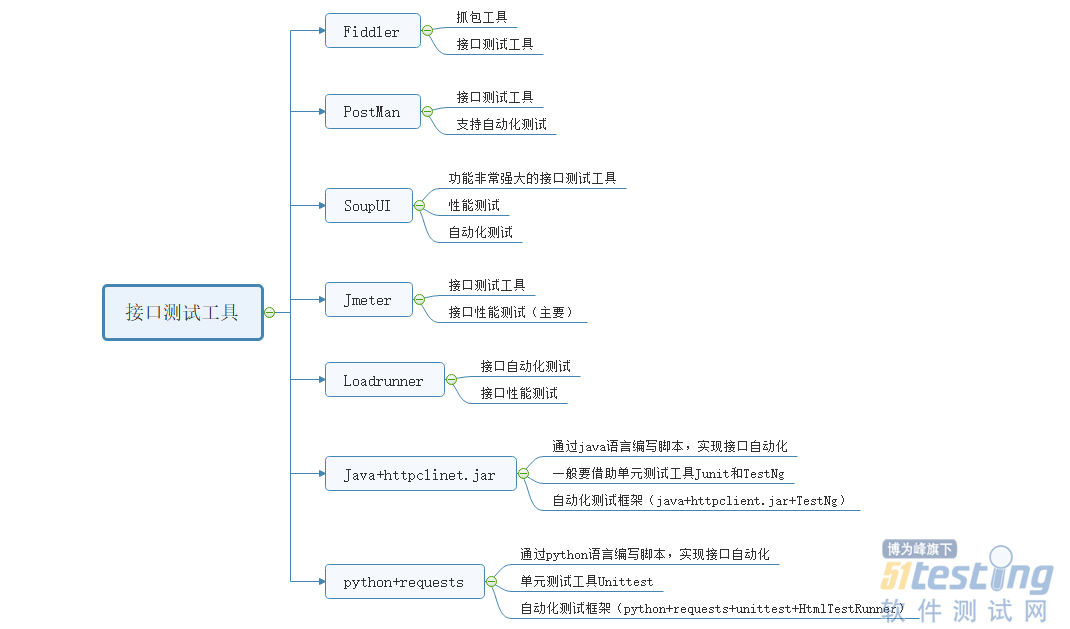- 举例告诉你,未开发完成的接口该如何测试——软件测试圈
前言
在做接口测试的过程中,接口还没有开发完成呢,领导就让介入测试,刚开始小伙伴们肯定会懵,接口都没有开发完成,怎么测试?有的状态不容易构造目前接口没有办法实现,这个时候怎么测试?这个时候就要引入新的知识点---mock。
mock
什么是mock?mock测试就是在测试过程中,对于某些不容易构造或者不容易获取的对象,用一个虚拟的对象来创建以便测试的测试方法。在工作中如果在接口没有开发完成时,也可以进行来模拟接口的返回数据从而验证接口的正确性。
mock需要场景
工作中,为了节约项目时间,开发测试可以进行同步进行,当开发没有完成接口时,测试人员可以通过mock来模拟接口返回数据内容。
模拟暂时无法实现的功能:比如真实的支付功能。
测试覆盖内容,当我们执行接口想要模拟状态400、500的场景,这个时候也可以通过mock。
python中的mock
python中有多重执行mock的方法,其中mock模块在python3.3以上版本已经内置到单元测试unittest中,python3.3以下的版本需要通过pip install mock的方法进行安装。
mock参数
mock在使用过程中需要最常用的3个参数。
name:表示mock的名称。
from unittest import mock result = mock.Mock(name='mock的名称') print(result) # 结果: <Mock name='mock的名称' id='2721150378120'>
return_value:表示mock的值。

side_effect:表示mock需要调用的对象(当使用return_value和side_effect值同时存在时,优先返回side_effect的值)。

unittest.mock()
这里安静举一个天气的例子进行实现,测试查询天气这个接口,最近上海都没有雪,那么我怎么去模拟雪这个场景?需要等到真正下雪的那天才可以吗?这里通过unittest.mock的方法。
import unittest
from unittest import mock
class Test01(unittest.TestCase):
def weather(self):
'''天气接口'''
# result = {'result': "雪", 'status': '下雪了!'}
pass
def weather_result(self):
'''模拟天气接口返回值'''
result = Test01.weather(self)
if result['result'] == '雪':
print('下雪了!!!')
elif result['result'] == '雨':
print('下雨了!!!')
elif result['result'] == '晴天':
print('晴天!!!!')
else:
print('返回值错误!')
return result['status']
def test_01(self):
'''模拟下雪天场景'''
mock_xue_result = {'result': "雪", 'status': '下雪了!'}
# 使用mock库进行模拟
Test01.weather = mock.Mock(return_value=mock_xue_result)
statues = Test01.weather_result(self)
self.assertEqual(statues, '下雪了!')
def test_02(self):
'''模拟下雨天场景'''
mock_yu_result = {'result': "雨", 'status': '下雨了!'}
# 使用mock库进行模拟
Test01.weather = mock.Mock(return_value=mock_yu_result)
statues = Test01.weather_result(self)
self.assertEqual(statues, '下雨了!')
if __name__ == '__main__':
unittest.main()通过执行发现,我们想要的下雪天气已经模拟成功了,说明当查询天气接口返回为雪的时候,就代表会下雪了。这样就不用在等到下雪的时候进行测试这个接口了。
mock.patch()
mock.patch()是mock的一个装饰器方法,其中patch的值表示写入需要mock的对象,还拿天气举例子,这里的patch的参数就需要填写天气的接口,需要通过python调用的方式进行填写天气接口。
# w1.py
def weather():
'''天气接口'''
pass
def weather_result():
'''模拟天气接口返回值'''
result = weather()
if result['result'] == '雪':
print('下雪了!!!')
elif result['result'] == '雨':
print('下雨了!!!')
elif result['result'] == '晴天':
print('晴天!!!!')
else:
print('返回值错误!')
return result['status']通过mock.patch()装饰器进行来mock返回数据。
import unittest
from unittest import mock
# 导入接口文件
import w1
class Test01(unittest.TestCase):
@mock.patch(target="w1.weather")
def test_01(self, mock_login):
'''下雪了'''
mock_login.return_value={'result': "雪", 'status': '下雪了!'}
statues = w1.weather_result()
self.assertEqual(statues, '下雪了!')
@mock.patch(target='w1.weather')
def test_02(self,mock_login):
'''下雨了!'''
mock_login.return_value = {'result': "雨", 'status': '下雨了!'}
statues = w1.weather_result()
self.assertEqual(statues, '下雨了!')
if __name__ == '__main__':
unittest.main()通过执行后发现,测试通过,已经成功的模拟了天气接口的返回值内容。
pytest.mock()
上面介绍的属于unittest中的mock,既然unittest中存在mock模块,那么pytest中也存在mock模块pytest-mock。
安装:
pip install pytest-mock
这里的mock和unittest的mock基本上都是一样的,唯一的区别在于pytest.mock需要导入需要mock对象的详细路径。
# weateher_r.py
class Mock_weather():
def weather(self):
'''天气接口'''
pass
def weather_result(self):
'''模拟天气接口'''
result = self.weather()
if result['result'] == '雪':
print('下雪了!!!')
elif result['result'] == '雨':
print('下雨了!!!')
elif result['result'] == '晴天':
print('晴天!!!!')
else:
print('返回值错误!')
return result['status']先将需要模拟的天气接口,以及需要模拟的场景的代码写好,然后在进行遵循pytest的用例规范进行书写关于mock的测试用例。
# test_01.py
import pytest
from test_01.weather_r import Mock_weather
def test_01(mocker):
# 实例化
p = Mock_weather()
moke_value = {'result': "雪", 'status': '下雪了!'}
# 通过object的方式进行查找需要mock的对象
p.weather = mocker.patch.object(Mock_weather, "weather", return_value=moke_value)
result =p.weather_result()
assert result=='下雪了!'
def test_02(mocker):
# 实例化
product = Mock_weather()
# Mock的返回值
mock_value = {'result': "雨", 'status': '下雨了!'}
# 第一个参数必须是模拟mock对象的完整路径
product.weather = mocker.patch('test_01.weather_r.Mock_weather.weather', return_value=mock_value)
result = product.weather_result()
assert result=='下雨了!'
if __name__ == '__main__':
pytest.main(['-vs'])通过上述代码,安静提供pytest中mock的2种方法:
第一种中的第一个参数是通过object的方式进行查找关于Mock_weather的类,然后在找到下面的需要mock的对象方法名称,第2个参数表示mock的值。
第二种方法中的第一个参数是通过完整的路径进行找到需要mock的对象,第2个参数是mock的值。
通过执行发现,两种方法都是可以mock成功的。
总结
简单的通过一个小的例子介绍了如何在python中使用mock的方法。大家也可以将mock方法加入到我们需要用到的项目中。从而更加方面的完成自动化,以及覆盖更多的自动化测试用例。

作者:测试安静
来源:51Testing软件测试网原创
- 0.00 查看剩余0%
- 【留下美好印记】赞赏支持
- 推荐阅读
- 换一换
- 界面自动化测试解决方案——软件测试圈10-29背景与问题接口,解决了从协议发起,到后台业务逻辑的测试,但是忽略了重要的部分:前端展现和交互。我们需要通过自动化回归测试,来解决端到端测试的问题,即从客户端发起到服务端完成,整个业务落成,而不仅仅是服务端的功能。界面自动化,聚焦于界面业务逻辑和交互测试,对于海量的数据组合测试,不是重点目标。当前端界面、业务逻辑发生改变,就需要通过界面自动化回归测试,来解决系统回归和覆盖的问题。自动化测试是未来发展的趋势录制回放工具与测试脚本通过录制来生成自动化的测试脚本:对象库:基于脚本与对象库分离参数化:对脚本进行参数化,可以实现相同的脚本执行不同的数据和测试用例测试脚本:定义了整个的测试过程。使用关键字视...

- 在测试行业,一个一直被讨论的问题就是:手工测试没有前途,自动化测试会取代手工测试?首先说结论:自动化测试不会取代手工测试,这完全是两个维度的事情。为什么不会呢?我们需要从本源上说起。手工测试没有前途,自动化测试会取代手工测试吗?什么是自动化世界上有很多职业,比如艺术家、维修人员、销售等等,每种职业都需要人来参与,而每种职业也都有部分工作交给机器来做。但无论哪种职业,几乎都是人来主导,然后将越来越多的工作交给机器来做,而机器无法实现的工作,比如创新、情感、思维等,只能由每个具体的人来完成。而这些必须由具体的人来完成的事情,我们称之为“手工”,机器完成的部分,我们称之为“自动化”。因此,手工、自动...
-
- “工欲善其事必先利其器”,通过前边几篇文章的介绍,大家大致对接口有了进一步的认识。那么接下来让我们看看接口测试的工具有哪些。目前,市场上有很多支持接口测试的工具。利用工具进行接口测试,能够提供测试效率。例如,让你一天完成100个接口测试任务,你觉得你加班能完成,那么1000个、10000个...... 如果有工具,可以大大提高你的效率,可以达到事半功倍,但是不是所有工具都能够支持你完成这个任务。下面我们就来挑选几个常用和常见的工具,简单介绍一下。如果需要或者有兴趣可以在网上查看各种工具对应的资料进行深入人的学习,这里带领大家了解一下,碰到这些工具会用、了解、知道这些工具就达到目的了,不要...

-
- 通过执行发现,我们在用例03中没有加入fixture,所有他没有执行一些用例的前置和后置操作。 测试报告 unittest:unittest中没有自带的测试报告,需要下载第三方的插件HTMLTestRunner和BeautifulReport来生成详细的测试报告。 pytest:pytest中也没有自带的测试报告,需要下载第三方插件pytest-html或者allure-pytest进行生成详细的测试报告。class Test01: def test_01(self): ...

-
- Kafka性能测试初探05-05相信大家对Kafka不会陌生,但首先还是要简单介绍一下。Kafka是一种高性能的分布式消息系统,由LinkedIn公司开发,用于处理海量的实时数据流。它采用了发布/订阅模式,可以将数据流分发到多个消费者端,同时提供了高可靠性、高吞吐量和低延迟的特性。Kafka的应用场景非常广泛,例如日志收集、事件流处理、实时监控等。在这些场景中,Kafka可以提供高可靠性和低延迟的数据传输,确保数据的稳定性和实时性。与此同时,Kafka还提供了丰富的API和管理工具,使得用户可以方便地配置和管理Kafka集群。很多高性能方案都会用到Kafka,今天我来分享如何使用Kafka Client API进行Kafka...
- 关于我们 联系我们 版权声明 广告服务 站长统计
- 建议使用IE 11.0以上浏览器,800×600以上分辨率,法律顾问:上海兰迪律师事务所 项棋律师
- 版权所有 上海博为峰软件技术股份有限公司 Copyright©51testing.com 2003-2024, 沪ICP备05003035号
- 投诉及意见反馈:webmaster@51testing.com; 业务联系:service@51testing.com021-64471599-8017

- 51testing软件测试圈微信




